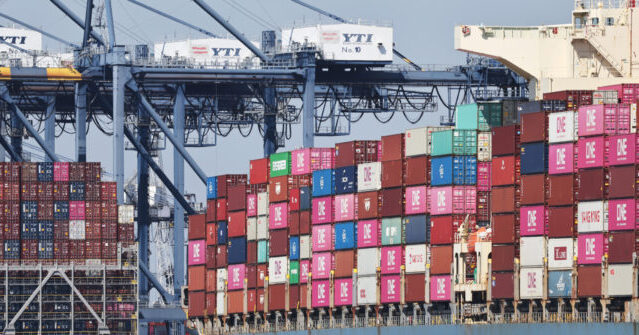US Economy Contracts 0.5% in Q1 2025 Amid Surge in Imports and Decreased Consumer Spending
The US economy contracted by 0.5% in Q1 2025, driven by a surge in imports and a significant slowdown in consumer spending, marking the first decline in three years.
Overview
- The US economy experienced a contraction of 0.5% in the first quarter of 2025, marking its first decline in three years.
- The contraction was more severe than previously estimated, influenced by a 37.9% rise in imports as consumers rushed to buy foreign goods before new tariffs.
- Consumer spending growth sharply decreased to 0.5%, down from 4% in the previous quarter, contributing to the economic decline.
- Federal government spending fell at an annual rate of 4.6%, the largest drop since 2022, further impacting GDP.
- The growing trade deficit and reduced government expenditure were key factors in the decline of GDP during this period.
Report issue

Read both sides in 5 minutes each day
Analysis
Center-leaning sources frame the economic contraction as a significant downturn, emphasizing the unexpected severity of GDP decline and its implications. They highlight consumer behavior and government spending as critical factors, suggesting a cautious perspective on economic stability. The narrative reflects concern over external influences, particularly tariffs, shaping economic dynamics.
Articles (7)
Center (3)
FAQ
The contraction was mainly caused by a surge in imports, which increased by 37.9%, and a significant decrease in consumer spending growth from 4% to 0.5%. Additionally, federal government spending fell at an annual rate of 4.6%, contributing to the economic decline.
The 0.5% contraction in Q1 2025 marks the first decline in the US economy in three years and is a significant reversal from the 2.4% growth experienced in the fourth quarter of 2024.
Federal government spending decreased at an annual rate of 4.6%, which was the largest drop since 2022, and this reduction was a key factor contributing to the overall decline in GDP during the first quarter of 2025.
Imports surged by 37.9% as consumers rushed to buy foreign goods before new tariffs were implemented, leading to an increase in the trade deficit which negatively impacted GDP.
The contraction raises concerns about a potential recession as it was driven by slowing consumer spending, increased imports, and reduced government expenditure, suggesting weakening economic activity early in 2025.
History
- 1M

 4 articles
4 articles





